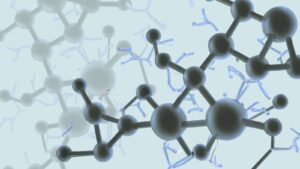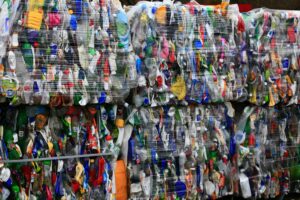How Can We Address Water Scarcity and PFAS?
Water scarcity will continue to be an economic and environmental challenge in the coming years. The global water crisis accounts for 785 million people in the world lacking access to clean water. That’s one in 10 people on this planet. Even more alarming is the rate at which PFAS (polyfluoroalkyl substances known as forever chemicals) contaminate wastewater, biosolid and digestate byproducts. Soil health and resiliency will also be needed to mitigate the impacts of a changing climate. Increasing regulations, fines, rationing and reuse policies are driving the need for technologies that treat, conserve and reuse water.
Freshwater is a Diminishing Resource
We will need to invest in tools, systems and innovation to better combat, manage and track water risk. As the planet warms and emissions continue to disrupt the climate, the first impacts we see will be water related. Whether that be flooding, drought, sea levels rising, or water scarcity, communities and corporations will need to prepare themselves for a future with less access to fresh water. Innovations that can support these challenges include:
- Better and cheaper ways to leverage atmospheric water.
- Hardware technologies that support water treatment and reuse.
- Real time data on water to address, predict and manage water risk through digital tools leveraging satellite imagery, machine learning, hydrology, and geospatial data.
While not all investors are keen to take on the risks associated with atmospheric water generation, there have been a number of investments in this space over the past year with Source Global raising $130M in their Series D round last July and other companies like Uravu Labs and Spout also picking up new investments.
Outside of water generation, desalination and hardware solutions treating water will also be required to produce the freshwater needed to meet increasing consumer and corporate demands. Two examples of companies supporting reuse and treatment include Epic Cleantec, a company supporting building water reuse and ZwitterCo, a company creating improved, easy to install membranes for water treatment centers that use zwitterions to dramatically reduce membrane fouling and costs.
Additionally, the threats that flooding, drought and water-related climate events that threaten supply chains are estimated to put at least $425B at risk over the next few years. This necessitates that companies that can provide more data to better manage and anticipate these risks, collaborate with corporates, banks, farmers, and insurance agencies to better manage assets. Companies that are providing these essential data systems include Cloud to Street (now known as Floodbase), Stormsensor, Waterplan, Aquaoso and Swan Systems.
When it comes to wastewater treatment, anaerobic digestion technologies also play a critical role in reducing the amount of energy used by the treatment systems. However, many anaerobic digestion and wastewater treatment plants are facing challenges with PFAS.
PFAS Contaminates Our Wastewater and Organic Waste
As we look to incorporate circular systems to reduce waste, we will need to address the increasing rates of this contamination. According to the Centers for Disease Control and Prevention, PFAS are a group of chemicals used to make fluoropolymer coatings and products that resist heat, oil, stains, grease, and water. These substances are particularly dangerous because they do not break down in the environment, they can move easily through soils, vegetation, and drinking sources, and they bioaccumulate in fish and wildlife, posing dangers to the environment, local food supplies and human health.
The discussion of PFAS is crucial in conversations on water and anaerobic digestion and renewable natural gas. Landfills, anaerobic digestors, and wastewater facilities, will all need to address ways to manage and destroy PFAS. As all these systems collect waste, they will have to handle the increasing volumes of PFAS found in their supplies. For example, biosolids and digestate, which have been used to provide revenue for wastewater and anaerobic digestion facilities by selling these byproducts to farms to use as fertilizers, will have to be more careful moving forward as these options become limited.
In Maine, there was a case where biosolids generated from a wastewater facility contaminated the farm and the dairy products with high levels of PFAS, and as a result, Maine has legislated against using biosolids as fertilizer.
PFAS can be found in organic waste like food waste, especially when plastic packaging that might originally contain trace amounts of PFAS are not separated out from the waste before it enters the anaerobic digestor. Technologies from companies like Aclarity and Kore Infrastructure that destroy PFAS will likely see more demand in the coming years. Many facilities do not know how to currently handle this waste and will not know what to do with it as regulations surrounding PFAS evolve. This is why it is essential that technologies like those from Kore Infrastructure that can destroy PFAS as a part of their pyrolysis process to convert organic matter into biogas and hydrogen, will be needed in the future as more and more waste facilities deal with this hazardous substance.
Increasing Soil Resiliency
Soil resiliency is needed to better adapt to a changing climate with more extreme weather events like drought and flooding.
On average, agriculture accounts for 70% of global freshwater withdrawals. In the last 30 years, food production has increased by more than 100%. FAO estimates that about 60% more food will be needed by 2050 to meet the food requirements of a growing global population.
Increased soil carbon and soil amendments that improve soil resiliency and increase the amount of water and nutrients the soil can absorb will be critical as more and more farmers deal with issues of water scarcity and flooding. Solutions like Lithos Carbon and Kore Infrastructure produce products that can be added into the soil to improve soil health and potentially capture carbon as well. Kore Infarstructure’s Solid Carbon BioChar claims, “It can be used as a soil amendment to improve nutrient retention and reduce irrigation needs by up to 60M gallons per year, based on the capacity of a single Kore system.”
As we look towards the future, we will need to address these key challenges with solutions to allow our communities to better adapt to a changing climate with less resources.
Holly Stower and Zainab Gilani of Cleantech Group discuss water resilience and adaptation- what it means and the different areas of focus within those terms.



